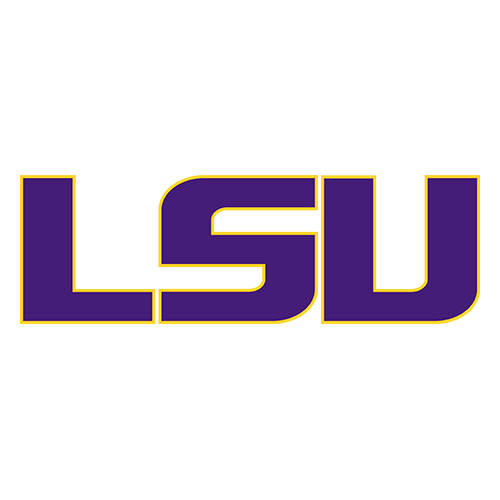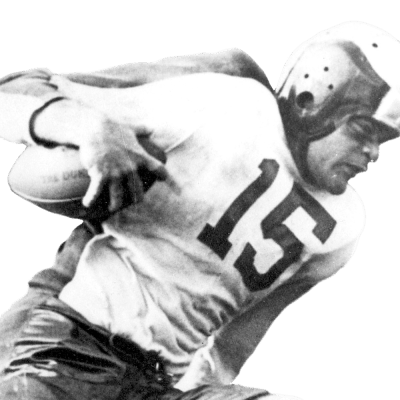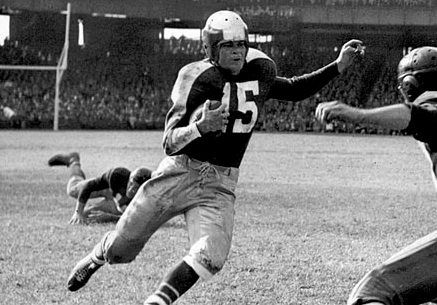My dad actually met him a few times, they worked out at the same gym about 25-30 years ago. He said his legs were a mess from the abuse he took on the field. If NFL Films was around when he played, he would have the same cult status as Jim Brown. It's amazing that he still holds Eagles records from 65 years ago...Shady MaCoy just broke two of them last year.
Steve Van Buren, the great halfback who led the Eagles to NFL championships in 1948 and ’49, died Thursday night in Lancaster, Pa. He was 91.
Van Buren played eight seasons for the Eagles and was the first player in franchise history to be inducted into the Pro Football Hall of Fame (1965). He is the only Eagle ever to lead the league in rushing, and he accomplished the feat four times.
“Steve was as good as any running back who ever played,” said Pete Pihos, a star end on those great Eagles teams. “He did things that were just unbelievable.”
At 6-1 and 210 pounds, Van Buren was as big as most linemen in that era, yet he was one of the fastest men in the league. In wind sprints, he routinely beat teammate Clyde Scott, who was a world-class track man. No one else had that combination of speed and power.
Last year, LeSean McCoy broke Van Buren’s team records for touchdowns in a season (18) and rushing touchdowns in a season (15), both set in 1945. Van Buren still holds the team record for most rushing yards in a game (205), most rushing touchdowns (69) and highest career kickoff return average (26.7).
Van Buren twice rushed for more than 1,000 yards in a season (1947 and ’49) and it was in a time when each NFL team played just 12 regular season games and the 1,000-yard plateau was considered almost unattainable.
“We used to say Steve was our paycheck,” said Bucko Kilroy, an All-Pro guard with the Eagles. “He could do everything. He was the best blocking back in the league. He could catch the ball. He could return punts and kickoffs. There was no one better running with the ball. Steve was the prototype [back] that every team has been looking for ever since.”
The arc of the Eagles fortunes rose and fell with Van Buren. They were one of the worst teams in the league prior to his arrival. When he joined them in 1944, they immediately became a contender. In 1948 and ’49, they were 20-3-1 and won two world titles. But when Van Buren was injured the following year, the team crashed and burned.
“We had a great line and an outstanding defense, but take away Van Buren and we were like a bull without its horns,” said Al Wistert, the team captain.
“When Steve carried the ball, he struck fear in the heart of the defense,” said Russ Craft, who played halfback. “When he hit the line, he looked like a bulldozer going through a picket fence.”
Van Buren was born in Spanish Honduras, the son of a fruit inspector. His father was American, his mother was Spanish. He was orphaned at the age of 10 and sent to live with his grandparents in New Orleans.
He weighed only 125 pounds when he went out for football in high school. The coach told him he was too small. Van Buren went to work in a steel mill and added sufficient muscle to make the team the next year. He played well enough to earn a scholarship to LSU.
He spent two seasons as a blocking back opening holes for Alvin Dark, who went on to achieve stardom in baseball. It wasn’t until Dark graduated that Van Buren got to carry the ball. He broke the conference rushing record and earned All-America honors. Head coach Bernie Moore apologized to Van Buren for not recognizing his talents sooner.
“[Moore] said he had done me a terrible injustice,” Van Buren said in a 1984 interview. “I told him not to think twice about it. Everything turned out all right.”
The Eagles made Van Buren their first selection in the 1944 draft. He signed for $4,000. He averaged 5.5 yards per carry and led the league in punt returns as the Eagles finished 7-1-2. The following year, he won his first rushing title, gaining 832 yards and averaging almost six yards a carry.
In 1947, Van Buren went over the 1,000-yard mark for the first time, finishing with 1,008 yards. The Eagles went to their first championship game that year, but lost to the Chicago Cardinals, 28-21. The following year, the same two teams met for the title, this time in a Philadelphia blizzard and the Eagles won 7-0 as Van Buren scored the only touchdown.
A fascinating footnote to that game: Van Buren almost missed it. He awoke that morning, saw the heavy snow and went back to sleep, assuming the game would be postponed. An hour passed and Van Buren decided he should go, just in case. He could not move his car so he took public transit from his home in Drexel Hill to Shibe Park in North Philadelphia trudging the last seven blocks through knee deep snow.
Once he arrived, he helped push the tarp off the field – both teams pitched in to assist the grounds crew – then he scored the winning touchdown. After the game, he celebrated in the locker room then walked to the Broad Street Subway and retraced his steps home.
The next year, the Eagles were 11-1 in the regular season and met the Los Angeles Rams in the championship game. It was played in a driving rain that flooded the L.A. Coliseum. The mud was ankle deep but it did not slow Van Buren, who rushed for 196 yards, a postseason record that stood for almost 40 years. The Eagles won the game, 14-0.
“That was probably my best game,” Van Buren said in a 1988 interview. “I had bigger [yardage] days but that one was for the title. I could have gained 400 yards but I got tired out. A couple times I was in the clear and fell from exhaustion.”
After the game, several Hollywood celebrities visited the Eagles locker room. Among them was Clark Gable, the most famous leading man of the day. He shook Van Buren’s hand and said, “You’re the greatest athlete I’ve ever seen.” Van Buren said thanks. A few minutes later, he asked a teammate, “Who was that guy?” He honestly didn’t know.
He was named the NFL’s Most Valuable Player in 1949. He also was named Athlete of the Year by the Associated Press. But in 1950, the years of pounding finally caught up with him. He struggled through two painful seasons and retired after ripping up his knee at training camp in 1952.
“I probably should have quit after we won the second championship,” he said. “I was in pretty good shape then. After that, it was all downhill.
“I hurt the big toe on my left foot [in 1950]. I needed a shot (pain-killer) before every game. I wasn’t the same. I was numb. I couldn’t move the way I did before and I took more punishment. Pretty soon, the ribs and ankle on that side were banged up, too.
“At the end, I was taking 12 shots before every game and six more at halftime. The wear and tear finally got to me. I played both ways, offense and defense, for four years. I led the league in carries five times. I just wore out.”
When Van Buren retired, he was the NFL’s leading rusher with 5,860 yards. His record was later surpassed by Jim Brown, Walter Payton and now Emmitt Smith, but Van Buren once stood atop the mountain. He scored 77 touchdowns, which is second only to Harold Carmichael in Eagles history.
After the NFL, he dabbled in the used car business and coached semi-pro football with the Bristol Saints and Newark Bears. He did some personal appearances but mostly he was content to spend time with his family – three daughters, 16 grandchildren and 16 great-grandchildren – and hang out with his buddies at Philadelphia Park race track.
In 1988, he suffered a stroke. Doctors told his family that if he lived, he likely would be paralyzed. Van Buren refused to accept it. Three months later, he walked unassisted onto the field at Veterans Stadium to join his old teammates at the 40th anniversary celebration of their first world championship. Wearing his familiar No. 15, Van Buren waved to the crowd, which greeted his introduction with a standing ovation.
“There were a lot of guys with tears in their eyes,” Al Wistert said. “Steve was the heart and soul of our team and he was our heart and soul today.”
Van Buren played eight seasons for the Eagles and was the first player in franchise history to be inducted into the Pro Football Hall of Fame (1965). He is the only Eagle ever to lead the league in rushing, and he accomplished the feat four times.
“Steve was as good as any running back who ever played,” said Pete Pihos, a star end on those great Eagles teams. “He did things that were just unbelievable.”
At 6-1 and 210 pounds, Van Buren was as big as most linemen in that era, yet he was one of the fastest men in the league. In wind sprints, he routinely beat teammate Clyde Scott, who was a world-class track man. No one else had that combination of speed and power.
Last year, LeSean McCoy broke Van Buren’s team records for touchdowns in a season (18) and rushing touchdowns in a season (15), both set in 1945. Van Buren still holds the team record for most rushing yards in a game (205), most rushing touchdowns (69) and highest career kickoff return average (26.7).
Van Buren twice rushed for more than 1,000 yards in a season (1947 and ’49) and it was in a time when each NFL team played just 12 regular season games and the 1,000-yard plateau was considered almost unattainable.
“We used to say Steve was our paycheck,” said Bucko Kilroy, an All-Pro guard with the Eagles. “He could do everything. He was the best blocking back in the league. He could catch the ball. He could return punts and kickoffs. There was no one better running with the ball. Steve was the prototype [back] that every team has been looking for ever since.”
The arc of the Eagles fortunes rose and fell with Van Buren. They were one of the worst teams in the league prior to his arrival. When he joined them in 1944, they immediately became a contender. In 1948 and ’49, they were 20-3-1 and won two world titles. But when Van Buren was injured the following year, the team crashed and burned.
“We had a great line and an outstanding defense, but take away Van Buren and we were like a bull without its horns,” said Al Wistert, the team captain.
“When Steve carried the ball, he struck fear in the heart of the defense,” said Russ Craft, who played halfback. “When he hit the line, he looked like a bulldozer going through a picket fence.”
Van Buren was born in Spanish Honduras, the son of a fruit inspector. His father was American, his mother was Spanish. He was orphaned at the age of 10 and sent to live with his grandparents in New Orleans.
He weighed only 125 pounds when he went out for football in high school. The coach told him he was too small. Van Buren went to work in a steel mill and added sufficient muscle to make the team the next year. He played well enough to earn a scholarship to LSU.
He spent two seasons as a blocking back opening holes for Alvin Dark, who went on to achieve stardom in baseball. It wasn’t until Dark graduated that Van Buren got to carry the ball. He broke the conference rushing record and earned All-America honors. Head coach Bernie Moore apologized to Van Buren for not recognizing his talents sooner.
“[Moore] said he had done me a terrible injustice,” Van Buren said in a 1984 interview. “I told him not to think twice about it. Everything turned out all right.”
The Eagles made Van Buren their first selection in the 1944 draft. He signed for $4,000. He averaged 5.5 yards per carry and led the league in punt returns as the Eagles finished 7-1-2. The following year, he won his first rushing title, gaining 832 yards and averaging almost six yards a carry.
In 1947, Van Buren went over the 1,000-yard mark for the first time, finishing with 1,008 yards. The Eagles went to their first championship game that year, but lost to the Chicago Cardinals, 28-21. The following year, the same two teams met for the title, this time in a Philadelphia blizzard and the Eagles won 7-0 as Van Buren scored the only touchdown.
A fascinating footnote to that game: Van Buren almost missed it. He awoke that morning, saw the heavy snow and went back to sleep, assuming the game would be postponed. An hour passed and Van Buren decided he should go, just in case. He could not move his car so he took public transit from his home in Drexel Hill to Shibe Park in North Philadelphia trudging the last seven blocks through knee deep snow.
Once he arrived, he helped push the tarp off the field – both teams pitched in to assist the grounds crew – then he scored the winning touchdown. After the game, he celebrated in the locker room then walked to the Broad Street Subway and retraced his steps home.
The next year, the Eagles were 11-1 in the regular season and met the Los Angeles Rams in the championship game. It was played in a driving rain that flooded the L.A. Coliseum. The mud was ankle deep but it did not slow Van Buren, who rushed for 196 yards, a postseason record that stood for almost 40 years. The Eagles won the game, 14-0.
“That was probably my best game,” Van Buren said in a 1988 interview. “I had bigger [yardage] days but that one was for the title. I could have gained 400 yards but I got tired out. A couple times I was in the clear and fell from exhaustion.”
After the game, several Hollywood celebrities visited the Eagles locker room. Among them was Clark Gable, the most famous leading man of the day. He shook Van Buren’s hand and said, “You’re the greatest athlete I’ve ever seen.” Van Buren said thanks. A few minutes later, he asked a teammate, “Who was that guy?” He honestly didn’t know.
He was named the NFL’s Most Valuable Player in 1949. He also was named Athlete of the Year by the Associated Press. But in 1950, the years of pounding finally caught up with him. He struggled through two painful seasons and retired after ripping up his knee at training camp in 1952.
“I probably should have quit after we won the second championship,” he said. “I was in pretty good shape then. After that, it was all downhill.
“I hurt the big toe on my left foot [in 1950]. I needed a shot (pain-killer) before every game. I wasn’t the same. I was numb. I couldn’t move the way I did before and I took more punishment. Pretty soon, the ribs and ankle on that side were banged up, too.
“At the end, I was taking 12 shots before every game and six more at halftime. The wear and tear finally got to me. I played both ways, offense and defense, for four years. I led the league in carries five times. I just wore out.”
When Van Buren retired, he was the NFL’s leading rusher with 5,860 yards. His record was later surpassed by Jim Brown, Walter Payton and now Emmitt Smith, but Van Buren once stood atop the mountain. He scored 77 touchdowns, which is second only to Harold Carmichael in Eagles history.
After the NFL, he dabbled in the used car business and coached semi-pro football with the Bristol Saints and Newark Bears. He did some personal appearances but mostly he was content to spend time with his family – three daughters, 16 grandchildren and 16 great-grandchildren – and hang out with his buddies at Philadelphia Park race track.
In 1988, he suffered a stroke. Doctors told his family that if he lived, he likely would be paralyzed. Van Buren refused to accept it. Three months later, he walked unassisted onto the field at Veterans Stadium to join his old teammates at the 40th anniversary celebration of their first world championship. Wearing his familiar No. 15, Van Buren waved to the crowd, which greeted his introduction with a standing ovation.
“There were a lot of guys with tears in their eyes,” Al Wistert said. “Steve was the heart and soul of our team and he was our heart and soul today.”






Comment